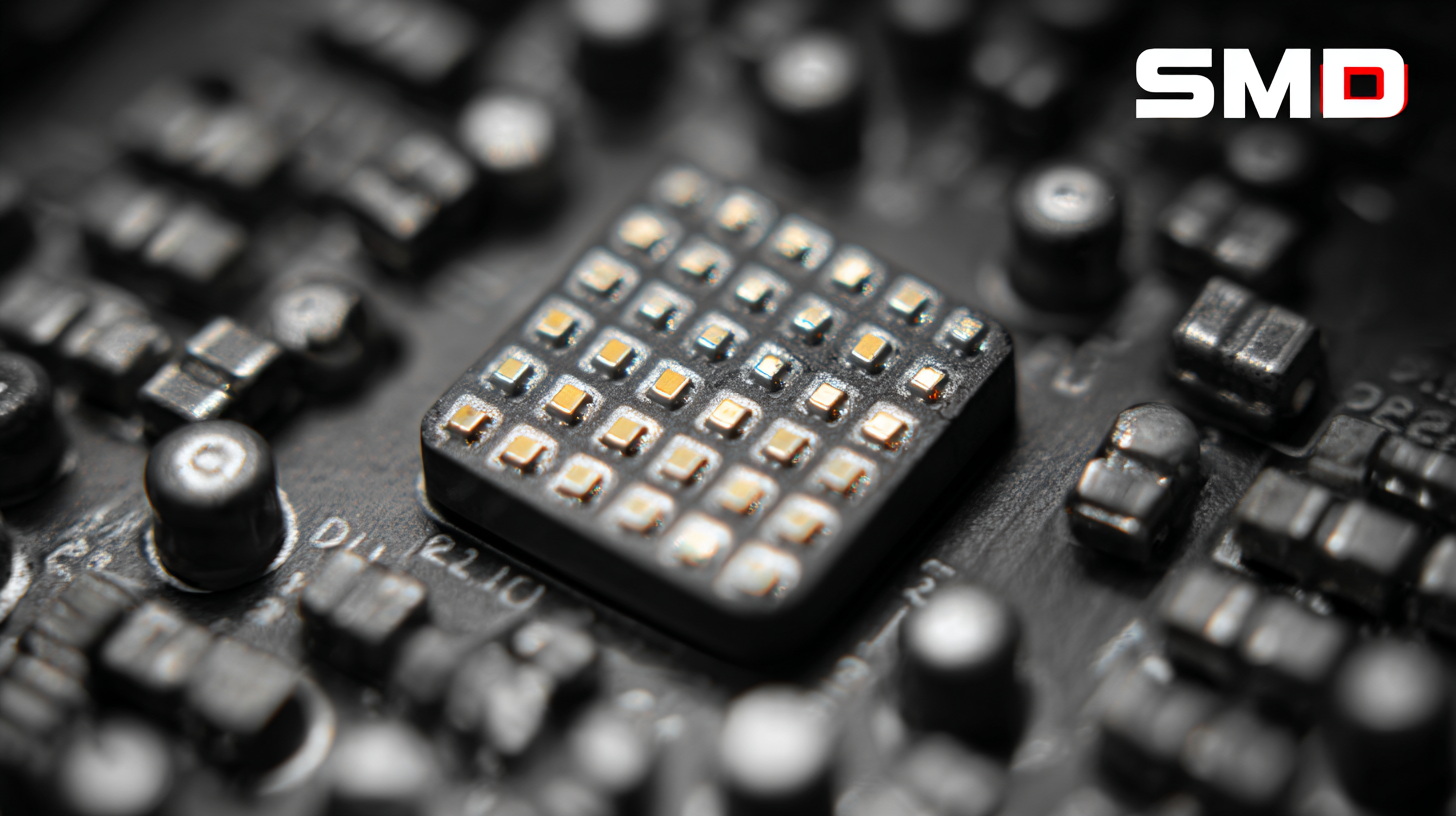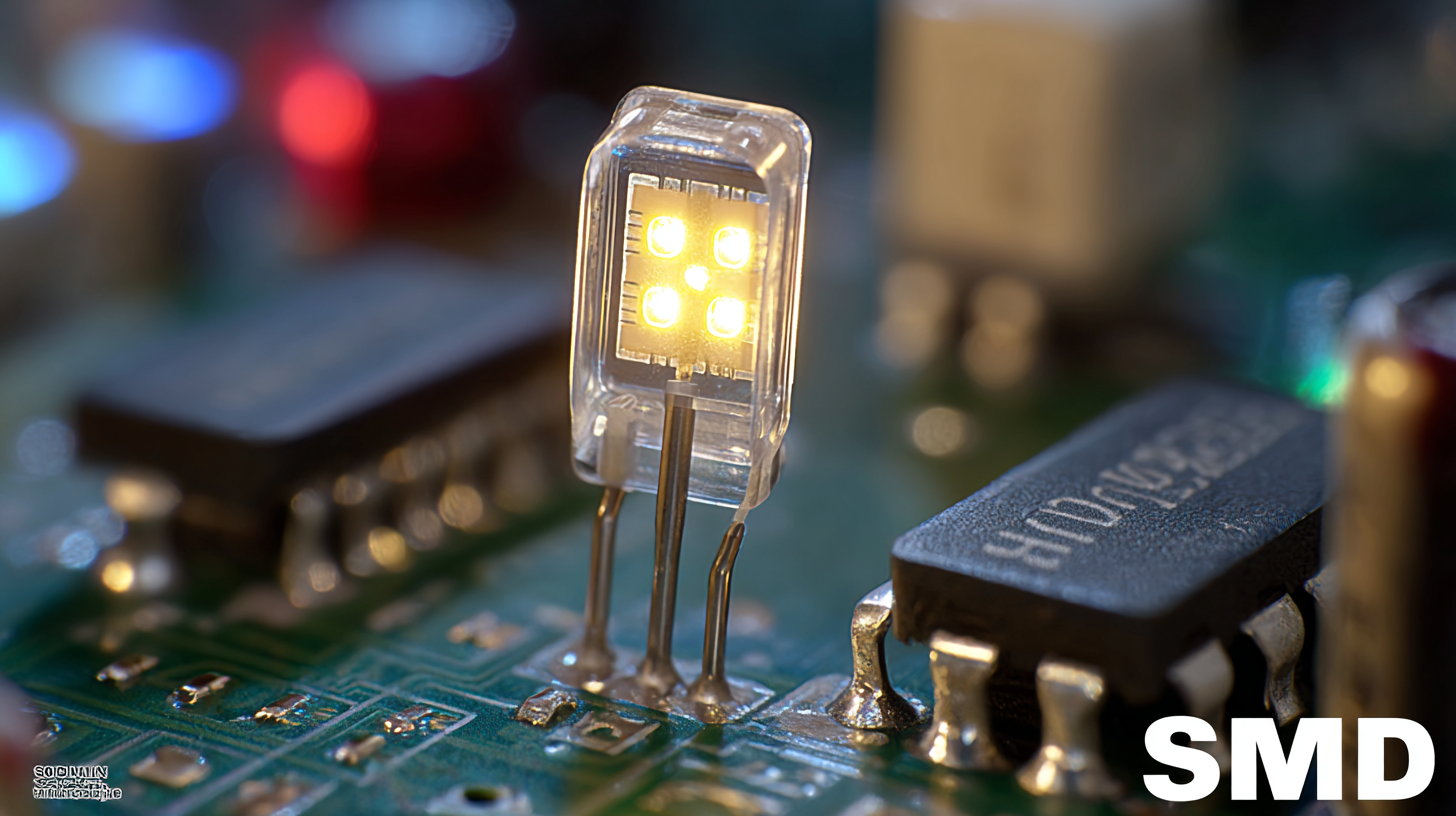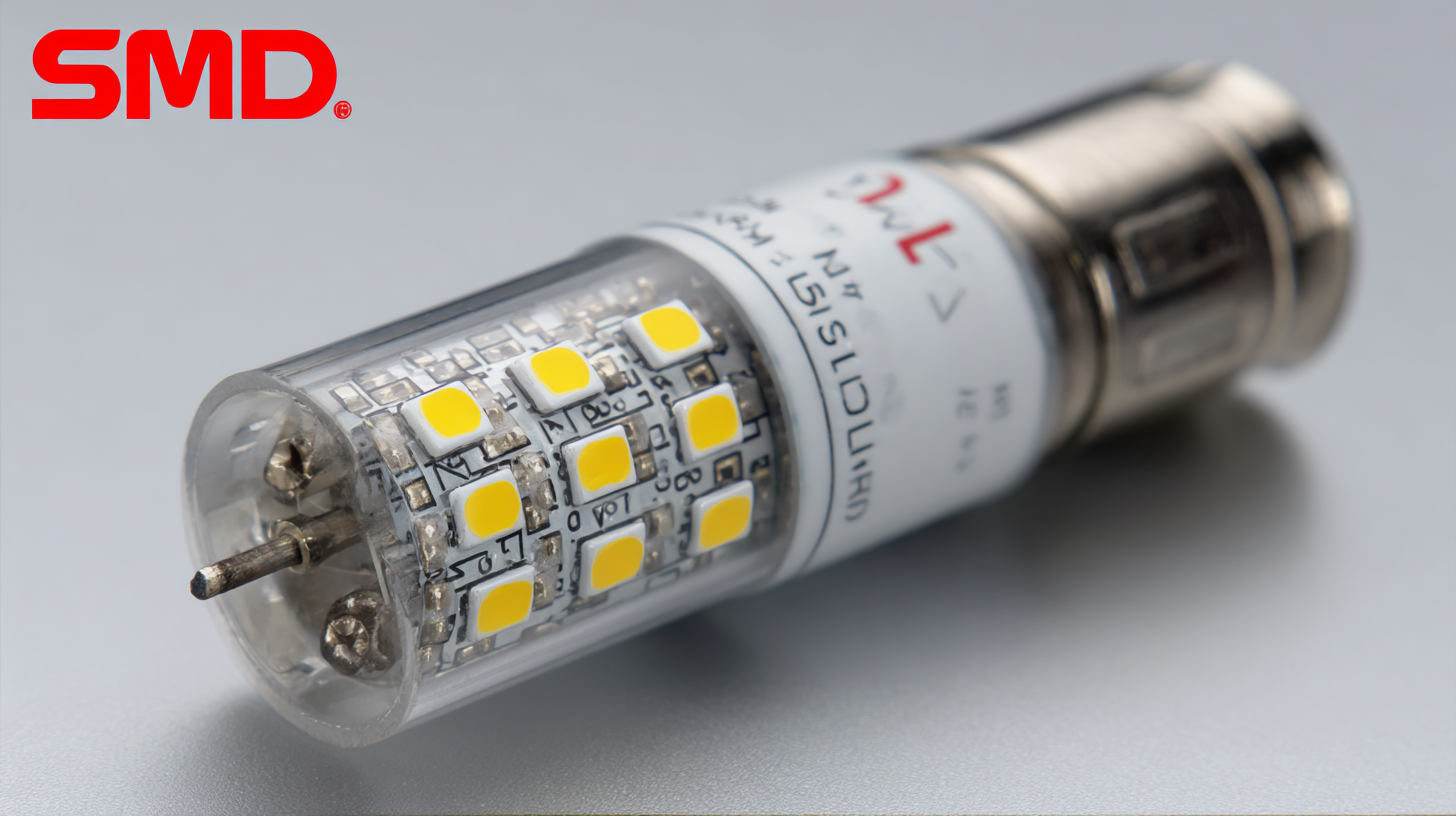Understanding the Challenges of Choosing the Best Smd Led Light for Your Needs
Choosing the right Smd Led Light for your specific needs can be a daunting task, especially with the myriad of options available in the market today.
According to a report by the U.S. Department of Energy, the LED lighting market is expected to reach $105 billion by 2025, reflecting a significant shift towards more energy-efficient lighting solutions.
However, with this growth comes a wide range of challenges, including varying quality, performance standards, and compatibility issues with existing fixtures.
Understanding these complexities is crucial for consumers and businesses alike, as selecting the wrong Smd Led Light can lead to higher energy costs, inadequate illumination, and even short product lifespan.
As we delve deeper into the common problems associated with LED types, we aim to simplify the decision-making process and help you find the perfect lighting solution tailored to your requirements.
Identifying Your Specific Lighting Requirements for SMD LED Lights
When it comes to selecting the best SMD LED lights for your needs, understanding your specific lighting requirements is crucial. The variety of applications for LED lights, ranging from residential to commercial use, necessitates a clear identification of your needs. Consider factors such as the desired brightness, color temperature, and the physical space where the lights will be installed. For instance, different environments may require varying levels of illumination and color accuracy. Failing to assess these parameters can lead to suboptimal lighting solutions that do not meet expectations.
Moreover, the ongoing advancements in LED technology introduce challenges, particularly in packaging and heat dissipation. Understanding these technical aspects can help you make informed decisions. Heat management is essential for maintaining the longevity and efficiency of LED lights, as excessive heat can lead to performance degradation. Additionally, the art of mixing RGB LED colors accurately is essential for achieving the desired color output in lighting designs, which deviates from traditional CRT color ratios. Hence, a thorough assessment of your specific requirements combined with knowledge of contemporary LED technologies is key to selecting the right SMD LED light for your space.
Understanding the Challenges of Choosing the Best Smd Led Light for Your Needs - Identifying Your Specific Lighting Requirements for SMD LED Lights
| Lighting Requirement |
Recommended SMD LED Type |
Color Temperature (Kelvin) |
Lumen Output |
Power Consumption (Watts) |
| Indoor Ambient Lighting |
SMD 2835 |
3000K |
800 lm |
10W |
| Outdoor Security Lighting |
SMD 5050 |
4000K |
1200 lm |
15W |
| Task Lighting |
SMD 5630 |
5000K |
1000 lm |
12W |
| Accent Lighting |
SMD 3528 |
2700K |
600 lm |
8W |
Understanding Different SMD LED Types and Their Applications
When it comes to selecting the right SMD LED lights, understanding the different types available is essential for meeting specific needs. Generally, SMD LEDs are categorized into three main types: standard SMD, high-brightness SMD, and RGB SMD. Standard SMDs are often used in general lighting applications, while high-brightness LEDs are ideal for situations requiring a more intense light output, such as outdoor and industrial settings. RGB SMD LEDs allow for color mixing, making them perfect for decorative and ambient lighting.
Tip: When selecting an SMD LED, consider the application first. For instance, if you need a light for a reading nook, standard SMDs with a warm color temperature may be suitable. However, for a vibrant stage setup, RGB SMDs provide versatility and creativity.
Additionally, the installation process can vary greatly among SMD types. Each type may have different wattage ratings and connection requirements. Ensure that you read the specifications carefully to avoid compatibility issues.
Tip: Always consult a lighting professional if you’re unsure about what type of SMD LED is best for your project, as they can provide invaluable insights tailored to your unique requirements.
Evaluating Key Features and Specifications of SMD LED Lights
When selecting the best SMD LED lights for your needs, it’s crucial to evaluate key features and specifications. The brightness of SMD LED lights is measured in lumens; for instance, a widely cited industry report suggests that a 10-watt SMD LED can produce around 900 lumens, making it an efficient alternative to traditional incandescent bulbs. Additionally, color temperature, which ranges from warm white (2700K) to cool white (6500K), significantly impacts the ambiance of a space. Understanding these specifications allows you to tailor lighting solutions that not only meet practical needs but also enhance aesthetic appeal.
Tip 1: Always consider the CRI (Color Rendering Index) when choosing SMD LED lights. A CRI of above 80 is recommended for spaces where color accuracy is vital, such as art studios and design spaces.
Another vital consideration is energy efficiency, often indicated by the lumens-per-watt ratio. According to the Department of Energy, high-quality SMD LEDs can achieve ratios of over 100 lumens per watt, helping to lower electricity costs significantly.
Tip 2: Look for products with warranty coverage, as a 5-year warranty can be a marker of quality and reliability in SMD LED lights.
Comparing Cost-Effectiveness and Energy Efficiency of SMD LEDs
When choosing SMD (Surface Mount Device) LEDs, understanding the balance between cost-effectiveness and energy efficiency is crucial. SMD LEDs are increasingly popular in various lighting applications due to their compact design and high performance. However, the initial investment can vary significantly among different products, making it essential to evaluate their long-term benefits. A higher upfront cost may often be justified by lower energy consumption and longer lifespan, ultimately leading to reduced electricity bills and maintenance costs over time.
Energy efficiency is a key factor that enhances the overall value of SMD LEDs. Unlike traditional lighting options, SMD LEDs convert a greater percentage of energy into light rather than heat, which means they operate cooler and last longer. This efficiency reduces the frequency of replacements, signaling further cost savings. Additionally, many SMD LEDs now come with ratings that indicate their lumen output per watt, making it easier for consumers to compare options. By selecting more energy-efficient models, consumers can contribute to environmental sustainability while enjoying substantial savings on energy costs.

Common Pitfalls to Avoid When Selecting SMD LED Lights for Your Needs
Choosing the right SMD LED lights can be a complex task, particularly with the numerous options available in the market today. One of the most common pitfalls is failing to consider the specific requirements of the application. Consumers often overlook key factors such as color temperature, brightness, and energy efficiency, which can greatly impact the overall effectiveness of the lighting solution. For instance, selecting a light with the wrong color temperature can affect mood and productivity in spaces like offices or homes.

Another mistake frequently made is neglecting the quality of the product. Not all SMD LED lights are created equal, and there is a significant variation in performance and lifespan among different brands. Consumers may be tempted to opt for cheaper options, but this can lead to higher long-term costs due to frequent replacements and increased energy consumption. It is crucial to research reputable manufacturers and consider customer reviews before making a purchase. This diligence ensures that the chosen SMD LED lights not only meet immediate needs but also provide reliability and efficiency over time.

Home
About Byone
Factory Tour
Products
Project Portfolio
Download
Blog
Contact Us


